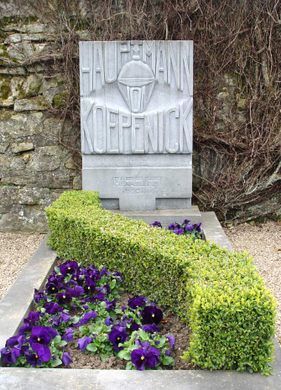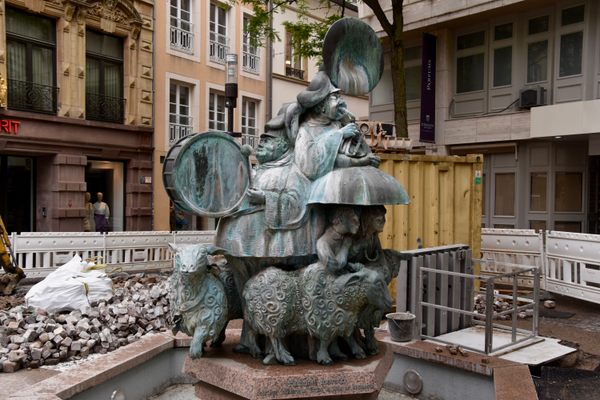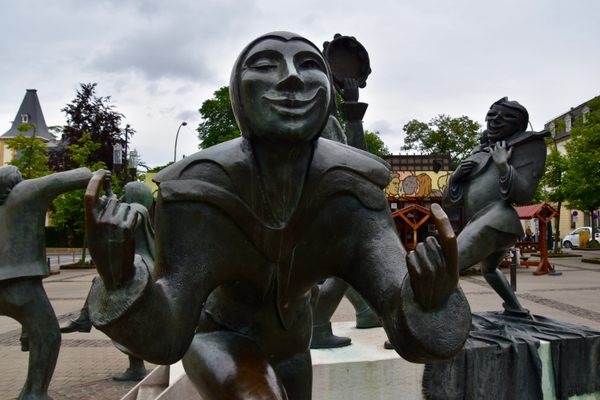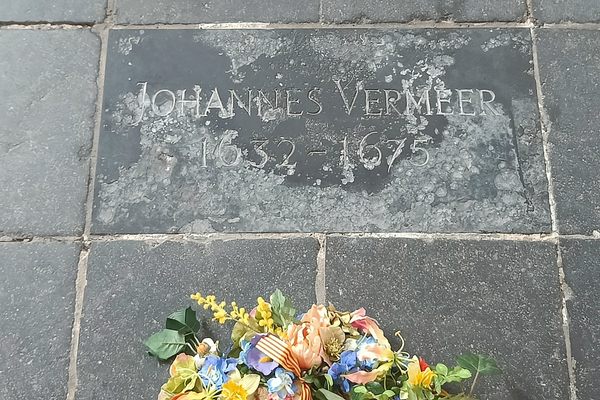AO Edited
Grave of Friedrich Wilhelm Voigt
A German shoemaker-turned-folk-hero whose impersonation of a Prussian military officer earned international notoriety.
Friedrich Wilhelm Voigt was born in in Tilsit, East Prussia. Following in his father’s footsteps he became a shoemaker. At age 14, he started having brushes with the law that put him in and out of prison for theft, forgery, and burglary.
His most infamous criminal episode happened in 1906, which was so spectacular that it cemented his place in history as an international folk hero. On October 16, 1906, in Berlin, Voigt disguised himself as a Prussian army captain. He had planned the ruse carefully, buying pieces of military uniforms at different stores and testing their effect on soldiers by seeing how they reacted when he wore them. He assembled a convincing captain’s uniform, which he kept in a luggage storage locker. After resigning from the shoe factory where he worked, he removed the uniform from storage, put it on, and went to the local army barracks. On the way, he stopped four grenadiers and an army sergeant and directed them to follow him, which they obeyed. Later, he dismissed the sergeant, directing him to report to his superiors, and then went on to commandeer six more soldiers from a nearby shooting range.
Voigt took his 10 soldiers to Köpenick and directed them to occupy city hall and told the local police to “care for law and order” and “prevent calls to Berlin for one hour” at the local post office. Voigt then had the city treasurer, von Wiltberg, and mayor, Georg Langerhans, arrested under suspicion of illegal bookkeeping. He “confiscated” the city’s funds, which totaled around 4,000 Marks. Then, after instructing his unwitting soldiers to keep watch for an hour, Voigt took the money, changed into his civilian clothes, and disappeared. He was arrested 10 days later on October 26, 1906, and sentenced on December 1 to four years in prison. However, public opinion of him was positive, and he was granted an amnesty by Emperor William II in August 1908.
Voigt’s impersonation as the “Captain of Köpenick” so captured the global imagination that during his life—and long after his death—he inspired stage plays, movies, television series, artwork, songs, and even a postage stamp. During his lifetime, with help from the press, he became famous as the “Captain of Köpenick” by playing himself in variety shows across Canada and the United States. In 1909, he published his memoirs, Wie ich Hauptmann von Köpenick wurde (How I Became Captain of Köpenick).
On May 22, 1909, Voigt submitted an application for residency in Luxembourg. He took up residence at 5, Rue Neipperg in the Luxembourg City Gare district. He worked as a shoemaker until 1918, when he retired to live off his wealth. He died from complications of the flu on January 3, 1922.
Know Before You Go
The Cimetière Notre-Dame maintains a series of QR codes on famous graves, including Friedrich Wilhelm Voigt's. Visitors can scan the codes with their smartphones to learn more about the cemetery's most famous residents.
Plan Your Trip
The Atlas Obscura Podcast is Back!


















Follow us on Twitter to get the latest on the world's hidden wonders.
Like us on Facebook to get the latest on the world's hidden wonders.
Follow us on Twitter Like us on Facebook